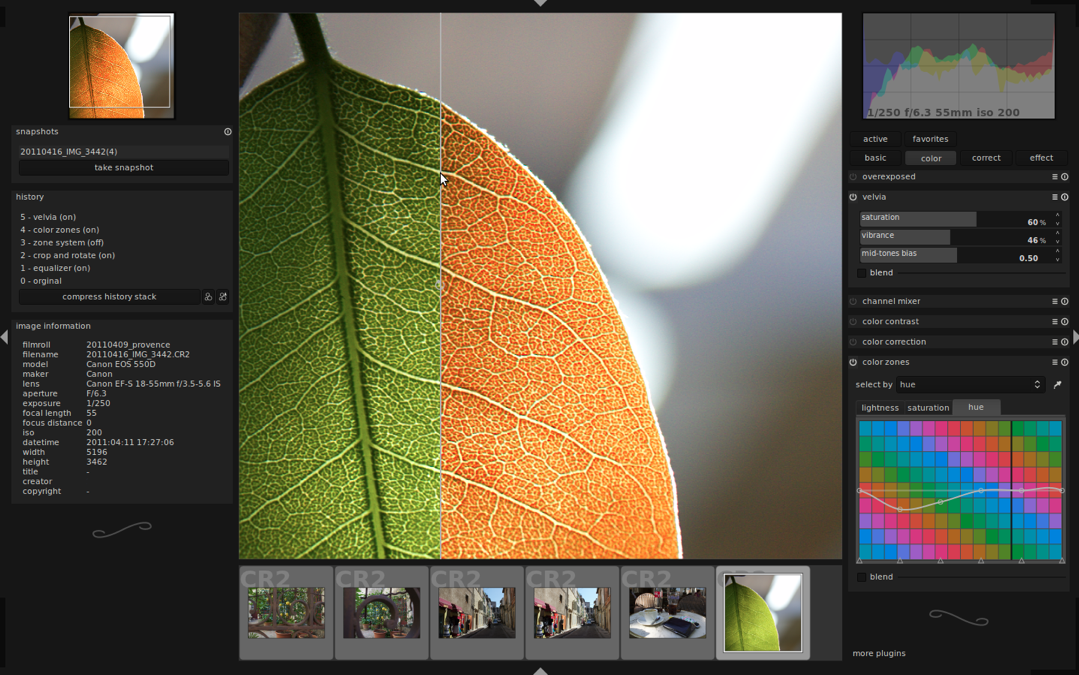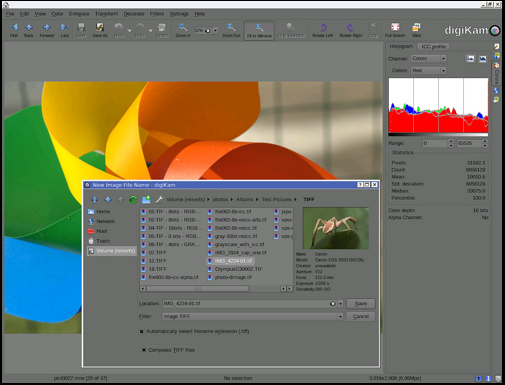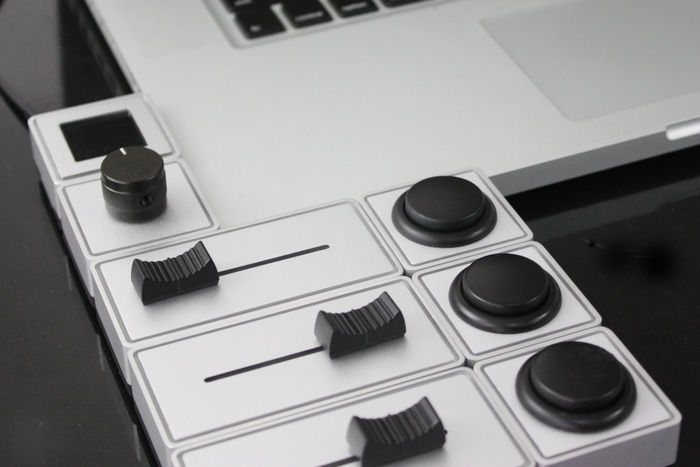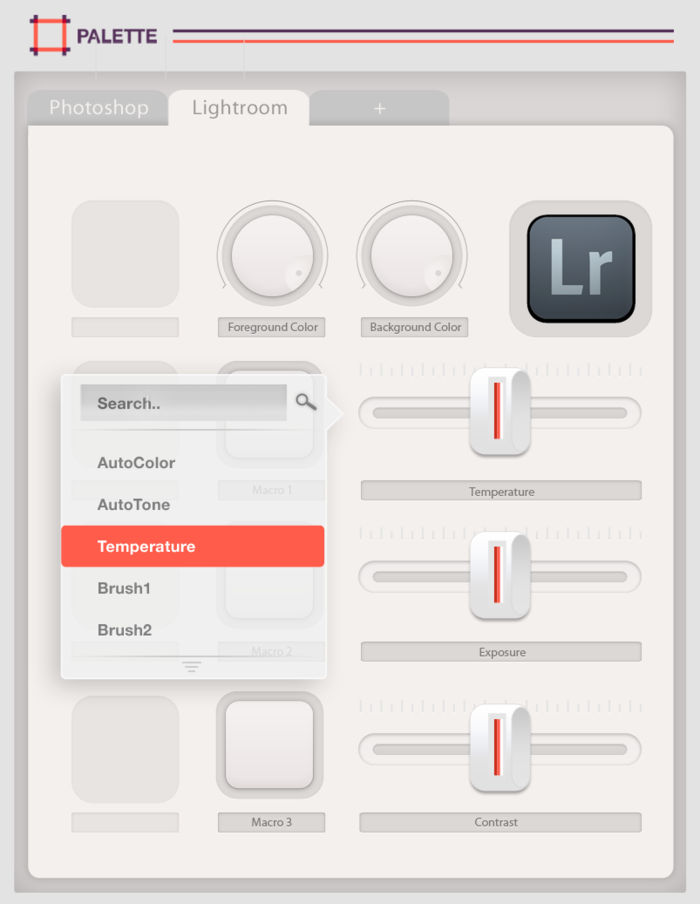Now that everyone has got over their shock that Apple will be consolidating its image editing and organisation features later this year, with the result that its top-end programme Aperture will be closing up completely, people are probably beginning to think about alternatives. I've pulled together ten Aperture alternatives and sought out their positive and negative features. They're all Raw compatible, but do double-check their non-destructive capability. A standard gripe for the majority of these programmes is that they're tricky to get to learn, or that the interfaces aren't intuitive. While it is entirely possible that some of these programmes do have seriously unfriendly workflows and interfaces, it might also a case of them being different to what you know. I remember opening Lightroom for the first time and wondering if it controlled the International Space Station, too. It's all a learning curve. Still, it's probably worth bearing in mind that the open-source options don't have such pretty interfaces as the paid-for programmes.
And finally, we really don't know what Apple's plans are for its photo management and editing programmes. It's possible that Aperture's features will be integrated into whatever comes next. Or maybe they won't, if Apple is looking for a simpler, more consumer-friendly package. But it remains to be seen.
Adobe Lightroom
Lightroom is probably the most obvious option for people looking for an Aperture replacement. It's a comprehensive editing suite that sets the standard in its field. In addition to the expected functions, Lightroom includes advanced features such as brushes, gradient tools and specific lens corrections. It's my editing suite of choice that I feel offers me almost everything I want in an image editor.
However, some photographers—me included—are concerned that the option to purchase Lightroom as a stand-alone editor will be subsumed into the subscription model Creative Cloud and we'll find ourselves beholden to Adobe in perpetuity. If the potential for that bothers you, you might wish to look elsewhere.
Positives
- Regarded as the market-leader in its class
Negatives
- Feature-laden interface can be overwhelming
- Some people unhappy with Adobe
Lightroom perpetual licence: £102.57 Adobe Photography CC bundle (Photoshop CC + Lightroom): £8.78 ($9.99)/month
Corel AfterShot Pro
If anyone doubted that Corel were still in business, yes, it is. And if you're wondering what happened to image editing software Bibble, it was bought by Corel... and became AfterShot Pro. The first version met with significant criticism for lack of basic features such as red eye correction and a reset button. This has been corrected for version 2, together with improved batch editing features and new noise reduction features. By all accounts, it's a pretty nippy piece of kit.
Corel has also stated that it is looking to make life as easy as possible for Aperture users who are looking for a alternative programme. It's reasonable price together with its comprehensive feature set makes AfterShot Pro a compelling option. And you can check it out for free before buying, too.
Positives
- Quick and responsive
- Comprehensive feature set
- Supports layers
- Batch processing options
- Enjoys local editing features
Negatives
- Idiosyncratic lay-out
- Limited plug-in selection
- No web or email sharing capability
Corel After Shot Pro: £57.99 (usually $79.99, currently $59.99)
Cyberlink PhotoDirector Suite
PhotoDirector claims itself to be 'a unique application that combines all the features you need for photography in a single workflow – efficient photo management, complete adjustment and creative editing.' It comes with some serious editing firepower—from body-slimming tools to content aware object removal—and some sparkling reviews. You can try before you buy with a 30 day free trial. If the PhotoDirector Suite is a bit too pricey for you, have a look at PhotoDirector Ultra, instead.
Positives
- Intuitive interface
- Comprehensive feature set
- Facial recognition
Negatives
- No batch processing
- Inconsistent import times
- No geo-tagging capability
- Limited lens correction profiles
Cyberlink PhotoDirector: £114.99 (currently £89.99)
PhaseOne Capture One Pro
You might think of Capture One as being a medium format image processor, but it's capable of handling dSLR- and EVIL-created files, too. It's history of medium format processing means that many of the features that you're accustomed to seeing in places such as Photoshop as well as Aperture and Lightroom come as standard in Capture One. You might need to take a deep breath when you look at the price, but there is a free trial to test it out first.
Positives
- Comprehensive feature set
- Supports layers
- Local adjustment tools
- Clean and customisable interface
Negatives
- Expensive
- Can be sluggish
Phase One Capture One: €229 (currently €114)
Darktable
Darktable is a free, open-source image editing suite that does seem to offer the most comprehensive and user-friendly experience without having to pay for anything. While one should never judge a book by its cover, the Darktable website is the most professional looking one in the open-source category.
Positives
- It's free
- Impressive range of functions, including split toning, film emulation, watermarking
- Tethered shooting support
Negatives
- Interface requires refinement
- Clumsy and confusing image filing system
- Undo system could be better
digiKam
The digiKam website does give me a mild headache, but plenty of people seem to like the software. In particular it includes some features that aren't available in places such as Lightroom yet, for example fuzzy search and facial recognition.
Positives
- It's free
- Map integration for geo-tagged images
- Facial recognition and fuzzy search capabilities
Negatives
- Can be buggy
- Idiosyncratic workflow
Lightzone
Once upon a time, Lightzone was a commercial enterprise under the aegis of the now-defunct Light Craft company. It went off-line unexpectedly in Sepember 2011, but resurfaced as an open-source initiative tentatively in December 2012 and then more fully in June 2013. Given it was once a commercial product, Lightzone does benefit from better-than-average-for-anope-source-project documentation.
Positives
- It's free
- Extensive functionality
- Well documented for an open-source project
- Intuitive layout
- Previews effects in miniature
- Supports layers
- Localised adjustments
Negatives
- Users need to register before downloading the software
- Weak image management tools
Hasselblad Phocus
Hasselblad's Phocus might have started out for Hasselblad cameras, but it now supports a wide range of manufacturers' devices.
Positives
- It's free
- Mobile app
- Intuitive, attractive interface
Negatives
- Not that many people know about it or use it (maybe that's a good thing?)
Photivo
Most of what I've read about Photivo suggests that it's a powerful piece of kit, but that it isn't necessarily easy to leap into it and get started. It doesn't offer any management features, just development functions, and is open about it not being for beginners.
Positives
- It's free
- Localised adjustments
- Extensive control
- GIMP integration
Negatives
- Not necessarily intuitive
- Not designed for image management
Raw Therapee
Raw Therapee seems to offer a peculiar mix of some incredibly advanced editing capability with some serious oversights. While its demosaicing feature is super for low noise images, it's reported that it doesn't cope well with noisier photos. With today's strospheric ISOs, it might be a dciding factor.
Positives
- It's free
- Demosaicing feature
- RL Deconvolution sharpening tool
Negatives
- Slow
- Complicated workflow
- No batch processing option
- No localised adjustments
- Wobbly image management interface














